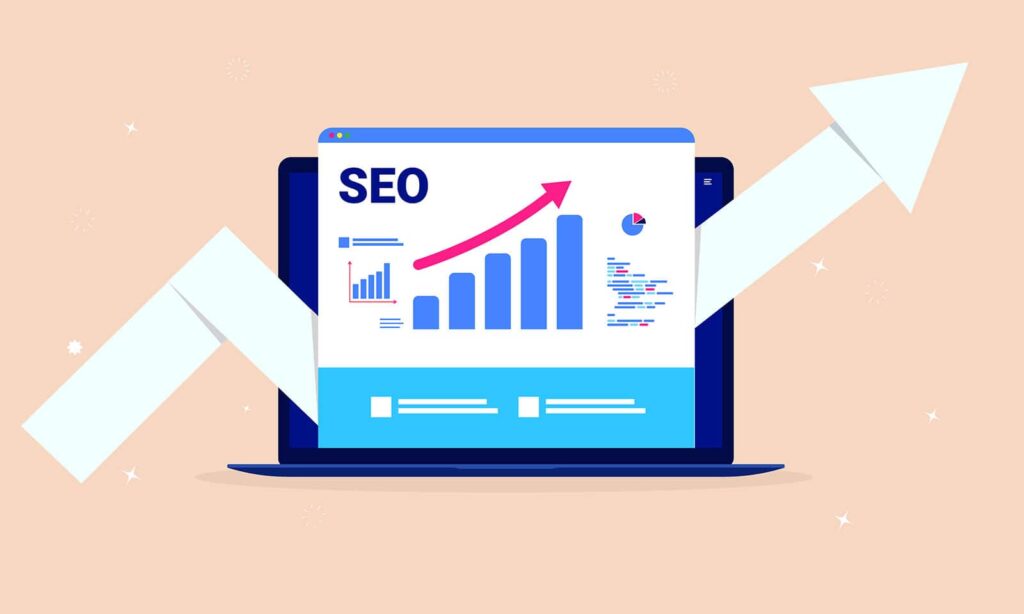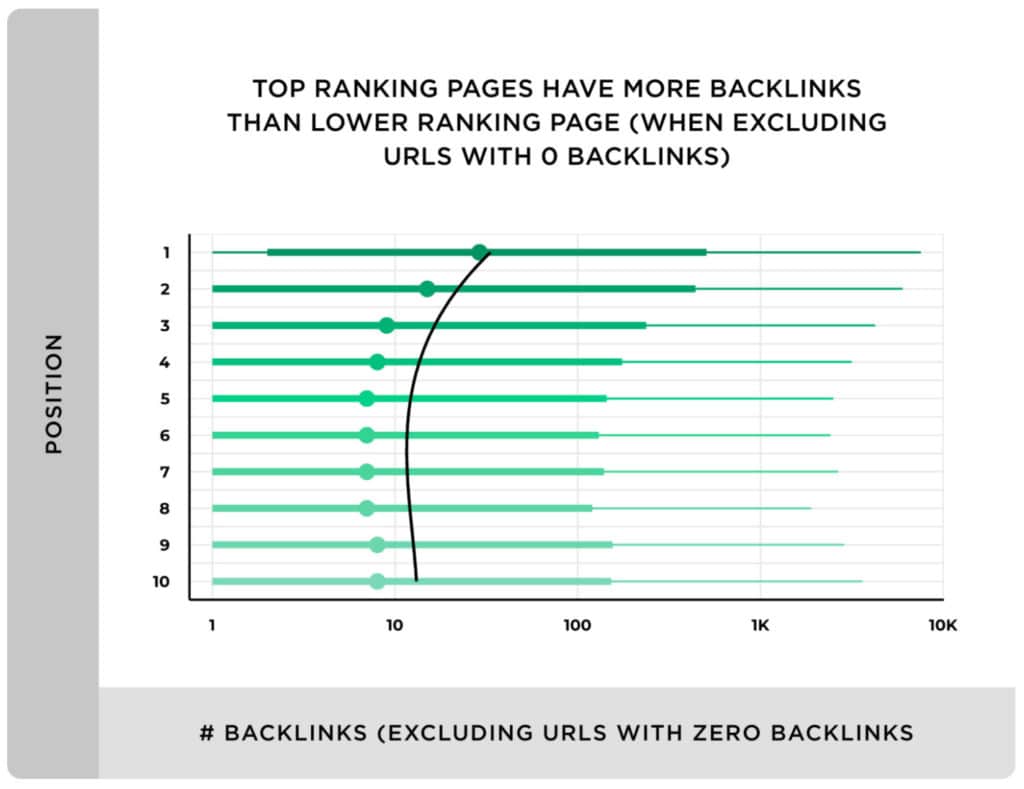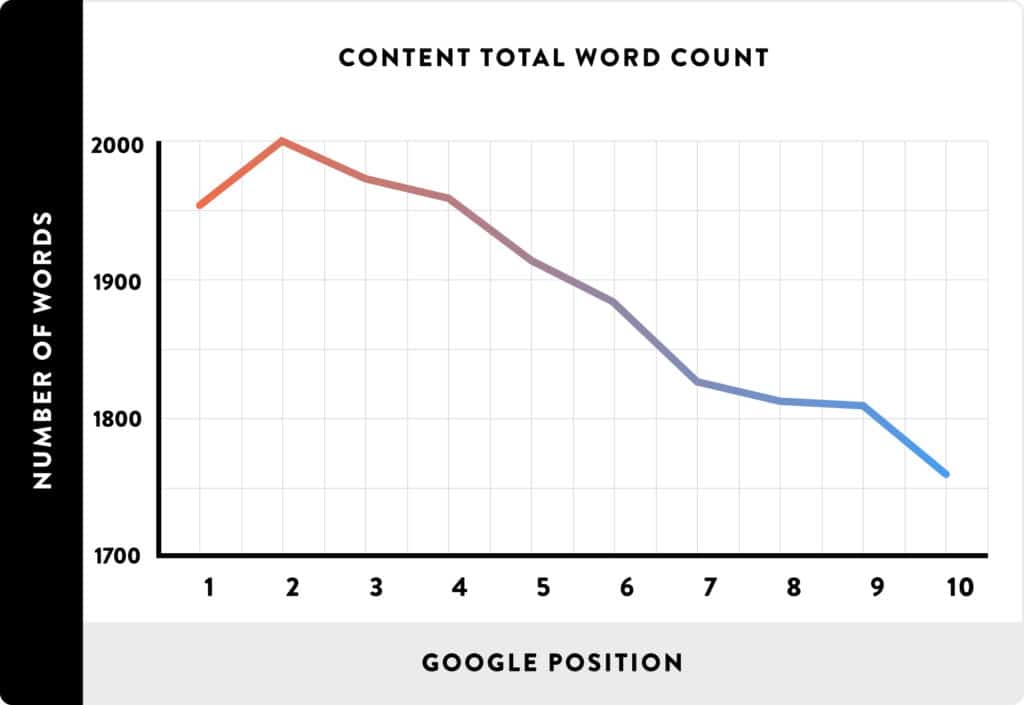How to Make Your Marketing Not Suck! A Guide for SEO Strategies
There’s a lot of bad marketing going on in the world, which drives me crazy. By doing your homework and taking a strategic approach to search engine optimization (SEO), you’ll get more traffic that turns into leads, sales, better rankings…and maybe even make some money!

Table of Contents
- SEO: How to Get Significantly More Traffic and Sales for Your Business
- What is SEO marketing?
- Stop the Bad Marketing: SEO Strategies to Bring You Sales
- Before Your SEO Campaign Starts:
- Who Do You Want To Attract? Define Your Target Audience:
- Keyword Research: How To Find Awesome Keywords
- OnPage SEO Optimization
- Link Building Strategy
- Measure Your SEO Results
- Extra SEO Strategy For Local Sites
- The Takeaway
- FAQs
SEO: How to Get Significantly More Traffic and Sales for Your Business
The SEO industry landscape is a little bit crazy. I’ve heard it described as hard to keep up with because the industry changes so rapidly – and in some ways, this is true! However, what drives rankings in organic search today has primarily stayed consistent for the last 10+ years: links and content are constantly updated.
The study by Backlinko shows a correlation between the number of backlinks and ranking factors.

Links are still an essential element when it comes to ranking.
For all the talk about how SEO has changed, it turns out that the basics are still constant. I’m not relying on theory here; I’m looking at what’s going on in search results to prove this.
With that said, we all want to prepare for the future!
Google has been trying to understand the content, search intent, and topics recently.
With their algorithm Hummingbird, Google tries to understand the connection between entities, topics, subtopics, and synonyms.
Google aims to match a user search query with an answer by scoring documents on the likelihood of providing this information. If Google can do so, it will have a new way of ranking search results.
This is why there isn’t just a focus on the “voting mechanism” (links) but also on the actual content of each page.
Search Intent
Search engines are getting smarter. While they used to be stuck on keyword matching, now they can look at the user intent behind search queries and understand that some searches have more than one meaning.
You should no longer build different pages for each keyword but focus on building topics-based pages.
For example, old-school search engine optimization builds pages for each keyword: guest post services and guest blog post services.
Google can now understand that all of these variations are the same thing, so you can create just 1 page and be on your way to ranking for a ton of different keyword phrases.
That’s why pages with longer in-depth content tend to rank better – There is a greater chance that the page will thoroughly explain what it says in its title.

You must become an authority on your topic to rank well in Google. Then it will be as simple as pushing a button for traffic to come flooding into your website!
To earn authority in Google’s eyes, you need what I call the “Authority Beacons.” In short:
Topical Depth
Articles should thoroughly answer all of the desired topics in a user’s question.
Topical Breadth
Utilize many articles on your website that answer all the questions your customers have.
Authority Links
SEO is a long-term play, so I recommend focusing on getting quality links to your site.
By adding these three elements together, you will see a massive increase in your website traffic and domain authority.
What is SEO marketing?
Search Engine Optimization (SEO) is a digital marketing strategy that focuses on your website’s presence in search engine result pages (SERPs) on search engines like Google. When you understand how SEO works, you can use different tactics to increase your visibility (or how high you rank) in search results.
Stop the Bad Marketing: SEO Strategies to Bring You Sales
SEO used to be about two things: keywords and ranking.
This is a short-sighted view of SEO, and it’s not how SEO works today. Having this outdated mindset will set you up for failure.

According to the Google algorithm, links are the most significant ranking factor, which will be difficult if no one wants to link your product pages. In addition, it will be hard for you to gain any equity because there won’t be anything cool on your website that can earn a backlink from other websites.
How to Improve Your Marketing Strategies by Implementing SEO
New-age SEO is more about gaining organic traffic (instead of rankings) and topics (instead of keywords).
When considering the customer journey, it is crucial to rank your product pages for keywords relevant to the end-buyer cycle instead of mid or beginner. However, most of the traffic comes from mid/beginner cycle keywords since they represent questions customers ask you every day (before an actual purchase occurs).
Creating quality content captures way more traffic, which positions you as an authority to your audience. This will enable them to make more sales!
Following this plan will increase your targeted organic traffic and valuable leads and make closing easier.
Let’s discuss actionable steps / SEO plans to get more traffic from Google!
Here’s how to do it:
Before Your SEO Campaign Starts:
After working with some of the biggest brands on earth, we’ve found that starting by auditing your site is a good idea, and it’ll help you build up from sturdy bedrock instead of flimsy sand.
You will want to check if your website has dropped in the past; use Google Webmaster Tools. By checking your analytics data, it will give you insight into possible reasons why traffic suddenly took a nosedive.
You can accomplish this by using SEO tools like Google Analytics & Google Search Console to monitor search traffic and SEMrush for technical SEO audits.
One excellent tool I use is the Google penalty checker, which compares a SEMRush graph of your traffic to all significant ranking updates. You can see if there have been drastic drops in traffic simultaneously as an update, indicating what you need to correct.

Some algorithm penalties are much harder to recover from than others, and it is essential not to spend a long time trying to fix the doomed site. Check out our Ultimate Guide To Google History; I have case studies on Penguin and Panda penalty recovery in there too! If you need help recovering your website’s ranking or fixing an issue like this after receiving a manual action penalty, follow these instructions: start up another new website while working on that current project, or hire me directly for some direct assistance.
Here is the battle plan to get started:
Who Do You Want To Attract? Define Your Target Audience:
Before any marketing campaign, it is crucial to define your target audience.
You probably have some great customers that give you tons of money, don’t ask for much, and are generally easy to deal with.
Other customers make life hell. They are not afraid to ask for a million things, don’t respect your time and effort, and expect you to work on the cheap with them.
You can sell to both clients, but do you want to? Probably not, and I bet one good customer is better than ten wrong customers.
Understanding who your customers are will help you determine what keywords to rank for, which topics you should cover in detail and how much content is needed.
Listening to your market and customers will help you generate many ideas for what keywords to rank for.

When I write copy for my services, I think about what prevents customers from making purchases. I then approach this issue to ensure that the customer will be satisfied with their purchase decision and therefore continue buying more products/services.
I create authority and trust when they are ready to buy by answering their questions, which is easier when they already have a business relationship with the client.
By understanding your target audience, you can answer their questions and help them solve their problems. This makes the customer happier, which in turn will make more money for you!
Once you understand your target, it’s time to find some keywords that will interest them!
Keyword Research: How To Find Awesome Keywords
Keyword analysis doesn’t have to be complicated – It’s simple!
You can separate keywords into two categories:
- Gained Keywords
- Missing Keywords
Target “Easy Wins” Keywords First!
To receive easy wins in rankings, one can use keyword research tools to find keywords for which they are on position four or below, and Google already sees them as relevant.
Optimizing these articles and sending more links to them can increase your ranking much faster than optimization for new keywords.
Content Gap Analysis: Find Your Competitor’s Keywords
Then it would help if you found out the keywords that are NOT being targeted, and you can do this by using competitive gap analysis.
You want to find all of your competitor’s websites so you can analyze their success. It would help if you did both direct competitors (competitors that sell the same products as you) and indirect competitors (other businesses in your industry that don’t sell the same product but have a similar audience).
Take an inventory of all the keywords your competitors rank for and remove those you also rank for.

Now you’ll have a massive list of creative keywords to target and build out quality content, like blog posts!
I would also recommend applying some filters, like filtering out keywords with high difficulty unless you have a strong domain. You should ensure sufficient search volume and that CPC costs more than $1 to filter unnecessary keywords.
These are the keywords that you’ll want to target. You can either optimize your existing content for them or create new site content around those topics!
Don’t be afraid of using long-tail keywords – These often convert higher and have greater intent!
OnPage SEO Optimization
Next, You’ll need to create the content and optimize your web pages.
Start by Optimizing your meta tags on-page SEO: Title Tags (Page Titles), Meta Descriptions, URLs, Header tags, Images, Structured data, and more.
The goal should be to build out in-depth content that answers users’ questions.
Using the list of keywords from the content gap analysis. Create content focused on those missing topics and add Internal links to that content!
User Experience Signals
It’s also essential to ensure that your page is easy to navigate and provides users with what they are looking for. You can look at what is ranking in Google as an example of how you should think about content design, etc.
Your user experience is essential. If your users are landing on your page and immediately returning to the SERPs, you need to fix that negative signal!
Content Marketing Strategy: Increasing Traffic and Conversions
Building content that fulfills target customers’ problems and questions it’s essentially attracting more traffic. This is called inbound marketing, which will attract more leads into your funnel.
Promote your content through channels outside of SEO, like email, social media, and paid ads to increase readership.
To drive the rankings, build out content and add links to your site.
Optimized Product Descriptions
It would help optimize your product descriptions to get more traffic to your website for online stores.
This helps separate you from your competitors by providing unique product descriptions for every single item in the store.
Link Building Strategy
Link building is one of the most critical and influential techniques. However, it has a bad reputation due to its potential for abuse.
One of the most prominent problems is that many sites have underestimated the number of links they need to rank.

Sites will get penalized for over-optimizing their anchor text and creating an unnatural profile.
When you are beginning your first link-building campaign, this is the plan I recommend:
1. Start with Branding / Diversity:
The biggest issue is when sites get hit with over-optimization; using natural anchor text and no exact match or commercial anchors will give your site tons of diversity.
Strengthen your social properties like Facebook, Twitter, Instagram, or any social media profile that applies to your niche.
Making multiple social profiles is a great way to show that you are an authentic brand. You’ll be getting inbound links and signals at the same time!
When you create new content on your site, post it to all those social properties to keep natural links flowing, and your social accounts stay active.
2. Get In-Content Diversity Links:
Get other diversified properties with in-content links. Building out web 2.0 type properties for this and using a mix of brand, natural, long-tail keywords variations to get high traffic rankings
3. Move on to High Power Links:
Keep building up your link base and add high-quality links with close or exact match terms.
Please don’t use the same anchor twice; switch it up to something slightly different each time.
It’s essential to have high-quality links that prove trustworthiness. If you haven’t built a lot of trustworthy, in-content links from reputable publications, your site won’t rank as well as it could be ranking now.
By adding these types of links month after month while changing your anchors each time, you’ll be able to build an incredible backlink profile.
You’ll also want to avoid these two big mistakes I see:
1. Anchor Text Ratios:
The most significant problem I keep seeing is people are still over-optimizing anchor text.
Stop worrying about anchor text ratios and focus on brand signals and naked URLs. Build natural links and only use <5% exact match anchors. This means 95%+ brand / naked and 5%. Google will never penalize you for having too diverse a portfolio of links.
2. Don’t Give Up Too Soon:
The second biggest problem I see is people stopping or giving up on link building. Google takes time to judge your site, but you can keep moving up for months based on bounce/click rates and other factors if a powerful website links back to yours.
If your SEO campaign isn’t working, keep at it! You need to diversify and be persistent. Make sure you’re always building links of different types so that Google can recognize your website as a thought leader in the industry. If you give up too soon after only one or two link-building efforts, then I guarantee: Your rankings will not increase or improve over time!
You will want to track how your link and content-building efforts are working.
Measure Your SEO Results
SEO is not about instant gratification. It’s a long-term investment you need to be patient with, but it will pay off in the end if done right!
I recommend using Google Analytics traffic reports and keyword rank tracking for the best results.

Though it may take time, you will see positive changes in rankings and traffic if you stick to this plan.
Extra SEO Strategy For Local Sites
Since Google maps are an integral part of the top results on most searches in this category, you must rank there if possible! If you’re a local business or have brick-and-mortar locations, I’ve included some additional steps to get started with your SEO. Here’s what to do:
1. Create a Google My Business Page
Set up your Google My Business Page accurately so you can rank in the local three-pack.
2. Audit Citations:
Audit your local citations before doing anything. Clean up and fix your local citations if necessary to avoid confusion! This will also tell you what citations are missing or incorrect.
3. Build citations & links:
Get the best citations and links that your top-ranking competitors have from industry sites and ego directories. Keep building these until you’ve crushed them!
The Takeaway
A well-rounded SEO strategy is the key to success in rankings and traffic.
As a digital marketing / SEO expert, I can help you get more traffic and sales. Over the years, with my SEO services, businesses have grown across various industries in different states! If anything comes up or if you need any assistance at all –let me know right away!
FAQs
When to update SEO plan?
Why most people in my niche are wrong about SEO?
Published on: 2021-10-02
Updated on: 2024-06-16